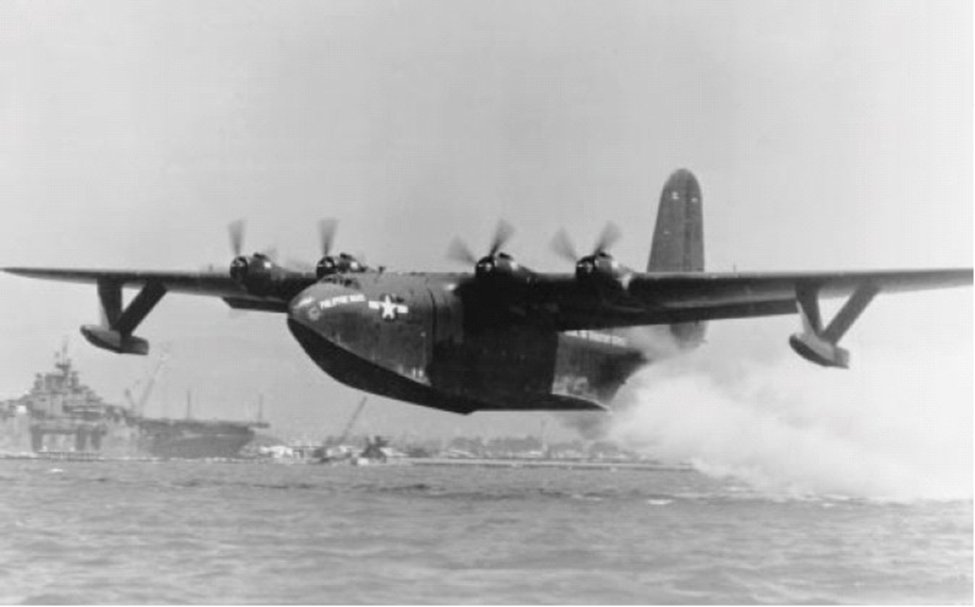The last of the Martin Mars flying boats just made its final landing, arriving in Arizona, where its eternal resting place will be the Pima Air and Space Museum (PASM). It took off earlier today from San Francisco and touched down in Lake Pleasant, Arizona. From there the iconic aircraft will be partially disessmbled and trucked to PASM for display. It will be one of more than 400 aircraft calling the 80-acre PASM museum home.

Originally developed for the U.S. Navy as a maritime patrol bomber and later reconfigured as a transport ferrying supplies between Hawaii and the Pacific Islands, the Mars family of flying boats found their niche as firefighting water bombers.
Philippine Mars landed in San Francisco on Sunday, making a pit stop on its way to its final destination after leaving its lakeside home in Vancouver, British Columbia. The flying boat was moored alongside the USS Hornet overnight in San Francisco Bay. The retired aircraft carrier now converted into a museum.


Philippine Mars took off on its final flight around noon local time today, passing over the Golden Gate Bridge and then south along the California coast before a more overland route after reaching Monterey Bay according to the FlightRadar tracking site. For a good part of the day, it was the site’s most closely followed aircraft.

In 2007 Coulson Aircrane Ltd. purchased Philippine Mars and its sister aircraft, Hawaii Mars “to expand its firefighting capabilities, establishing itself as the only operator at the time operating both fixed wing and rotary wing firefighting aircraft,” according to the company.
The Martin Mars flying boats were unique aircraft.
With a wingspan of 200 feet and a length of more than 117 feet, the Mars — in its ultimate configuration — tipped the scales at 165,000 pounds at its maximum takeoff weight. It was powered by four Wright R-3350 Duplex-Cyclone radial engines, each producing 2,500 horsepower.

There were seven Martin Mars flying boats, all produced between 1942 and 1947, according to Coulson.
“The surviving fleet of four aircraft were sold in 1958 to a consortium of timber companies in British Columbia, Canada, and converted into the world’s largest waterbombers carrying 7,200 U.S. gallons per drop,” according to Vintage Aviation News.
“The Mars fleet flew cargo between Hawaii and the Pacific Islands to support the U.S. Navy during World War II,” the company explained. “After the war, they supported the Korean War with medical air transport lifts between Hawaii and California, later transitioning to cargo lift work between Hawaii and California before being decommissioned in 1956.”

The surviving fleet of four aircraft was sold in 1958 “to a consortium of timber companies in British Columbia, Canada, and converted into the world’s largest waterbombers carrying 7,200 U.S. gallons per drop.”
Coulson purchased two of the aircraft, the Hawaii Mars and the Philippine Mars, in 2007, which marked the beginning of the company’s fixed-wing air tanker operations for aerial wildfire support.
The Mars water bombers “served the Province of British Columbia from 1960-2015 and over the span of 55 years dropped over 50 million gallons each which is more water on fires than any other single firefighting aircraft in history anywhere in the world.”
The aircraft were put up for sale nearly a decade ago, but nobody bought them. Eventually, they were fully retired as the cost to fly and maintain them grew.
A deal was later worked out to send Philippine Mars to PASM. As we previously reported earlier this year, its sister ship, Hawaii Mars, made a two-hour flight to its new home at the B.C. Aviation Museum in Sidney on Vancouver Island.

Now that Philippine Mars has arrived in Arizona, there will be no more majestic Mars flying boats to ever grace the skies again, marking the end of an aviation era.
Contact the author: howard@thewarzone.com
